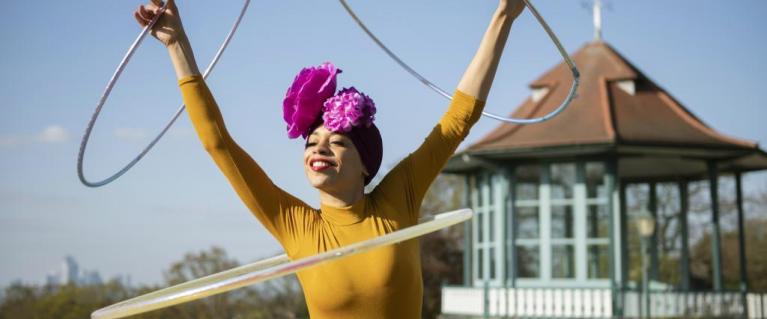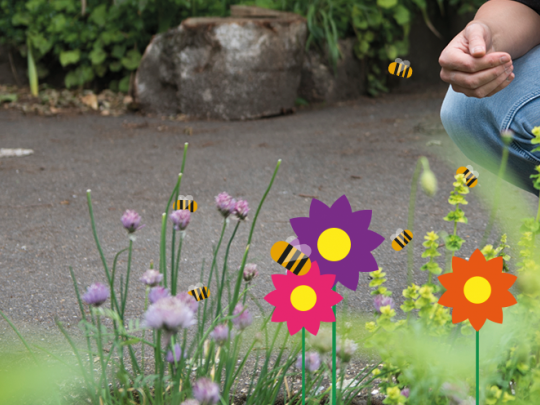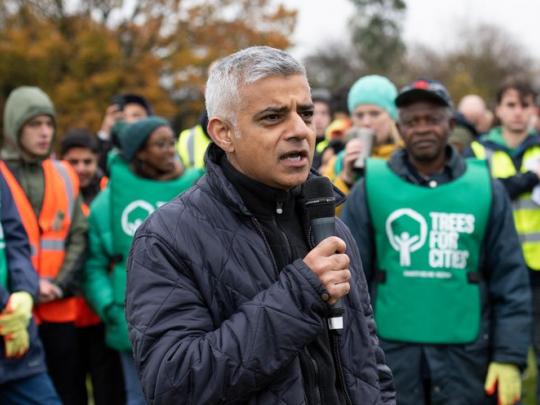
London National Park City
In July 2019, the National Park City Foundation confirmed London as the world's first National Park City. Our city is almost 50% green and blue – with thousands of parks, front gardens, allotments, street trees, green roofs, rivers, canals, and ponds.
The Mayor hosted a summit at City Hall, and to celebrate, we held the National Park City Festival from 20-28 July 2019.
National Park City Festival
-
90000
People visited the Festival, enjoying green spaces and outdoor activities
-
317
Free events held across Greater London, delivered by 150 different organisations
-
878+
Volunteers made the festival possible, helping Londoners to connect with nature
-
70%
Of attendees more likely to get outdoors, aiding health and social cohesion
Highlights from the event (video)
Playing this video will set cookies from YouTube/Google
Get involved

A National Park City is an idea and a movement which encourages everyone to do their bit to improve quality of life in London by making the city greener, as expressed in the London National Park City Charter. Here are some ways you can get involved:
-
Read our top tips for how you can help to make the city greener, healthier and wilder
-
Sign-up to our email list to hear about future giveaways of free trees, planting kits and future initiatives
-
Visit the London National Park City website for many more ways to get involved including becoming a National Park City Ranger.
London as a National Park City
A London National Park City aims to encourage more people to enjoy the great outdoors and to support all Londoners, and the city’s businesses and institutions, in making the city greener, healthier and wilder.
More than half of the world’s population now live in cities and the trend towards more urban-living is growing; London is set to be home to over 11 million people by 2050. Cities have to adapt if we want liveable neighbourhoods in the future that respond to the challenges of climate change, help to conserve biodiversity and provide people with healthy, active lifestyles. A study has shown the capital avoids £950 million per year in health costs due to the benefits Londoners gain from using green spaces.
As a National Park City, London will be:
- a city which is greener in the long-term than it is today and where people and nature are better connected
- a city which protects the core network of parks and green spaces and where buildings and public spaces aren’t defined only by stone, brick, concrete, glass and steel
- a city that is rich with wildlife where every child benefits from exploring, playing and learning outdoors
- a city where all can enjoy high-quality green spaces, clean air, clean waterways and where more people choose to walk and cycle.
The Mayor's role

The Mayor has an important role to play:
- The London Environment Strategy sets out how a National Park City will protect and improve London’s green infrastructure and natural capital, alongside other vitally important environmental objectives such as improving air quality and becoming a zero carbon city.
- The London Plan includes policies on protecting the Green Belt, parks and natural habitats, and greening buildings and the public realm so that development contributes to an environmental net gain.
- The Mayor’s Transport Strategy shows how investing in cycling and walking infrastructure and promoting Healthy Streets also contributes to London being a National Park City.
The Mayor’s ambition is to make more than half of the capital green and increase tree canopy cover by 10 per cent by 2050. City Hall has already funded the planting of 500,000 new trees as well as increasing the quality and quantity of green cover in the capital, and enhancing habitats for wildlife, fresh ideas like green roofs and green walls will also help London’s fight against climate change.
National Park City Festival 2019

The National Park City Festival took place over nine days from 20 to 28 July 2019. It was London’s largest free celebration of the city’s great outdoors and celebrated London becoming the world’s first National Park City, encouraging Londoners to discover the capital’s green and blue spaces; improving health, wellbeing and social cohesion.
The Festival consisted of 317 free events, which spanned all London boroughs, and attracted tens of thousands of Londoners.
Need a document on this page in an accessible format?
If you use assistive technology (such as a screen reader) and need a version of a PDF or other document on this page in a more accessible format, please get in touch via our online form and tell us which format you need.
It will also help us if you tell us which assistive technology you use. We’ll consider your request and get back to you in 5 working days.